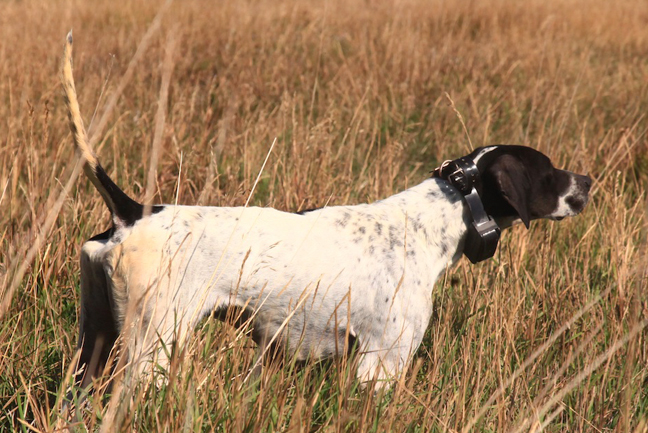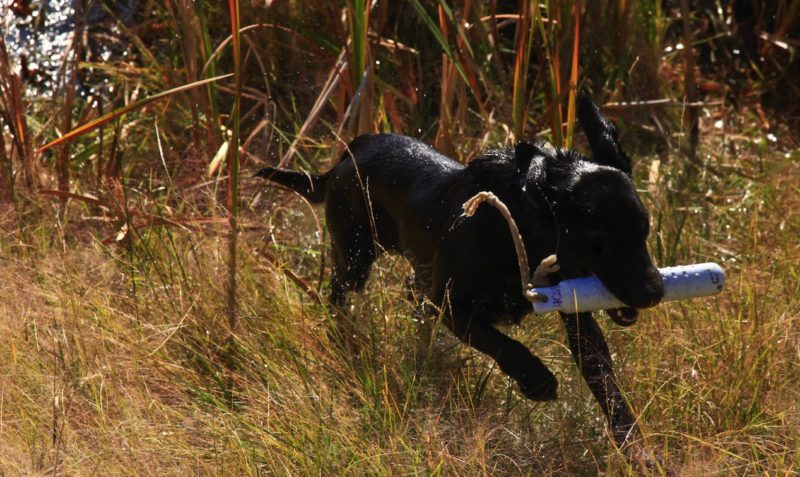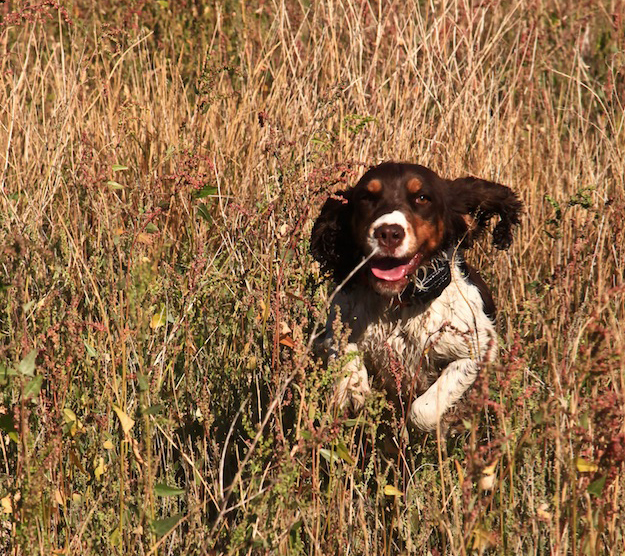While coming up with a strategy I remember my friend Keith Schopp’s sage advice from several years back. Keith works for Purina, and he’s in constant contact with bird dogs, conditioning, hunting, and field trialing. Here’s part of his conditioning platform based on working with lots of sporting breeds across a lot of time.
Determine your dog’s level of physical fitness. “Before training, check out the Purina Body Condition System and touch base with your veterinarian to be sure that your dog’s weight is appropriate. Sedentary dogs lose the muscle mass they gained during the training and hunting season. If their meals haven’t been scaled back during the off-season they may have put on some weight. Ultimately you’ll have to start somewhere, so start early in the morning when it’s cool and try 15 to 30-minute sessions of free running every other day. Incorporate water and swimming into your routine, especially if the temperatures are hot. After a week or two gradually increase duration and intensity of your workout sessions until they replicate a field or covert hunting rotation.
Read your dog’s signs. “Dogs can quickly overheat, even in the water. Panting, shade-seeking behavior, lethargy, and wobbly gait are signs of heat stress. The most telling sign of overheating is a dog’s temperature. Normally, that’s between 101 to 103 degrees, but after a hard workout, it could be as high as 107 degrees. As a dog starts to cool down, his or her temperature should drop to below 104 degrees within five minutes. If you sense your dog is getting hot or experiencing heat stress, get him or her to a cool place immediately. Apply a cool cloth or sponge soaked in water to the belly, under the front legs, ears, head, and throat, and seek veterinary attention.
Carry Water “When you’re training and conditioning a dog for the season you’ll need lots of water. They’ll drink more when they’re out of shape than when they’re lean and fit, so pack water bottles or a hydration pack at all times. Remember, the harder and longer a dog works, particularly in very warm or cold temperatures, the greater the loss of body water. Exercise produces heat, and water helps to dissipate about 60 percent of heat through water evaporation in the respiratory tract. Water also helps to remove the byproducts of energy metabolism, perhaps the most important determinant of endurance and performance. I carry at least two squirt bottles and require my dogs to take a small drink every 10 minutes. You can see the lift healthy hydration provides.
Adjust your feeding regime “As temperatures increase it’s not unusual for a dog’s food consumption to decrease. As a general rule, dogs need about 7.5 percent fewer calories for every 10 degrees the ambient temperature rises above the moderate temperatures of spring or fall. Obviously, the more a dog works and the cooler it gets, you’ll need to gradually increase food intake to provide calories and maintain condition.
“Our scientists and nutritionists recommend feeding a high-protein/high-fat performance dog food year-round because it metabolically primes dogs to use these fuels for exercise. Ideally, a sporting dog should be fed a high-quality performance food containing 30 percent protein and 20 percent fat to sustain his or her energy demand. Our example is the such as Purina Pro Plan SPORT Performance 30/20 Formula, which will sustain the dog’s energy demand.
“Why a performance food year-round? Switching to a maintenance food in the off-season is like metabolically detraining your dog. Maintenance formulas tend to deliver higher levels of carbohydrates, which actually decrease the metabolic capacity to use fats. This ultimately results in reduced endurance. So instead of switching, reduce the portion fed during the off-season.
“Try feeding your dog once a day and as many hours before heading afield as possible. Dogs should work on an empty stomach. Feeding a meal shortly before exercise increases blood flow to the gut and decreases the amount of blood available to working muscles. The mechanical load induced by carrying food in the intestines during exercise may cause problems while working in the field. As a rule, feed after a dog has cooled down in the late afternoon or early evening.”
Getting a dog ready for the hunting season is a lot of fun. Time combined with some thought and patience is the best way to dust off the cobwebs. Opening Day will be here before we know it. We’ll be ready with dogs pointing, retrieving and flushing, just as they did last year.



